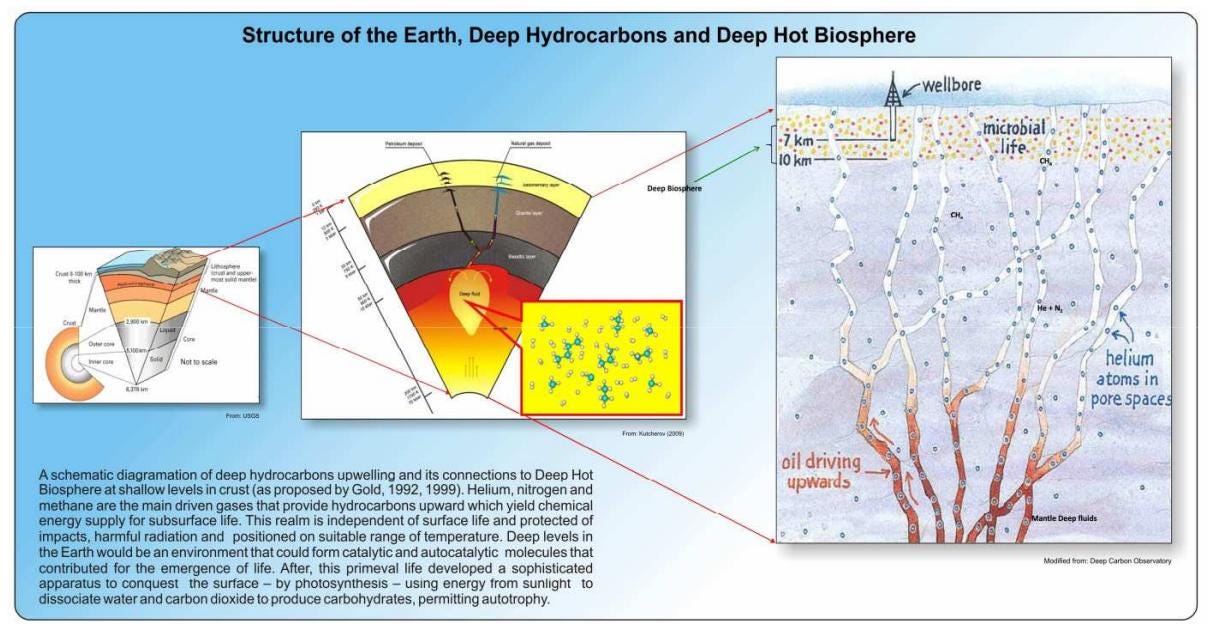Fire Ice
Promise or Peril?
What is a grayish icy substance that fizzles and erupts into flames when touched by a match?
Meet "Fire Ice," or methane hydrate, a hidden force inside Earth's crust containing both amazing energy potential and unimaginable planetary danger.
Methane hydrates, or clathrates, are ice-like compounds composed of methane and water.
Clathrate hydrates are solid cages of water containing small guest molecules like carbon dioxide or methane.
These hydrates are found primarily in ocean sediments along the world's continental margins and in areas of high-latitude, continuous permafrost.
There are astonishingly vast deposits, holding thousands of gigatonnes of carbon.
One estimate is that these global hydrate sediments contain over 7 billion cubic kilometers of methane in the hydrate form, far exceeding the total of all other estimated sources of natural gas.
The standard explanation is that this methane is primarily formed over time by the remains of plankton that lived in the ocean, sank to the ocean floor, and were finally incorporated into the icy sediment layers where the organic substances were slowly converted to methane.
However, the stupendous size and extent of global deposits of methane hydrate boggles the imagination.
If all this methane had been produced from biological materials, much larger source deposits would have to be involved, even larger than for the production of all the other global hydrocarbon deposits, which themselves pose significant problems of origin.
Yet many of these hydrates on the ocean floor, or in the permafrost of the northern regions, do not overlie the requisite enormously deep sedimentary deposits.
Their presence in such large quantities fits readily with the thesis that abiogenic, non-biological methane seeping up from deep inside earth is a widespread phenomenon and that the quantities involved are large enough to have supplied all the carbon deposits on Earth.
Methane hydrates contain more energy than all the world's oil, coal, and gas combined.
This makes them a significant potential energy source; a cleaner, more sustainable alternative to traditional natural gas, while humanity lingers in the unfortunate thralldom of the hydrocarbon fuel phase.
Methane hydrate mining is a relatively new field that aims to extract methane from these vast deposits.
The mining process involves drilling into the ocean floor, injecting carbon dioxide into the hydrate to replace the methane, hopefully reducing the risk of landslides.
The methane is then extracted from the hydrate.
However, mining methane hydrates comes with serious risks.
A large-scale release of methane during extraction could exacerbate climatic disruptions.
Destabilization of the seafloor can lead to underwater landslides and tsunamis, disrupting ocean ecosystems and threatening coastal areas.
What makes methane hydrate potentially lethal is its instability, as well as the fact that we cannot breathe it if it becomes significant in the atmosphere..
As ocean currents shift, and permafrost melts, methane hydrate deposits are beginning to destabilize.
Landslides and small quakes can release huge plumes of methane bubbles into the ocean and then into the atmosphere.
On land, the dangers of methane hydrate destabilization are evident in the form of large craters found in Siberia.
These mysterious craters which have suddenly appeared are believed to have formed due to the explosive release of melting methane hydrates due to thawing permafrost.
A large release of methane from environmentally melting or commercially disturbed hydrate deposits could have significant impacts on the biosphere, from accelerating climatic disruptions, to potentially leading to a mass extinction event.
Curiously, deep in the frigid ocean depths of the otherworldly landscape of these methane hydrate deposits, there resides the methane ice worm, Sirsoe methanicola, a unique species of polychaete worm.
These enigmatic worms play a crucial role in the delicate balance of this subsea ecosystem.
They are being found in various locations globally, indicating a widespread presence.
In the Gulf of Mexico, dense colonies were observed burrowing into mushroom-shaped mounds of methane seeping up from the sea floor.
Methane worms have been found in great numbers near deep-sea methane seeps, which are vents in the ocean floor where hydrocarbon-rich fluids ooze into the ocean.
The discovery of these worms in diverse locations suggests that they may be ubiquitous on seafloor methane deposits, possibly worldwide
What makes the methane ice worm truly remarkable is its intricate symbiotic relationship with bacteria, a partnership with profound implications for the stability of methane hydrate deposits.
The worms rely on a complex network of bacteria to thrive in their methane-rich habitat.
They establish a symbiosis with the bacteria, allowing them to assimilate methane into biomass.
This unique partnership not only sustains the worms but also contributes to the stabilization of methane hydrates at depths where the crystals are exposed.
The "Fire Ice" beneath our feet is a realm teeming with boundless wonders and mind-boggling dangers.
The extraordinary energy potential concealed within this enigmatic substance is counterbalanced by the gravity of unprecedented disaster.
We ponder this potential resource, not with triumphant fanfare but with a measured reflection on the delicate equilibrium we must navigate if humans choose to exploit it.
Carrying the weight of newfound awareness, we must recognize the imperative to tread judiciously.
Methane Hydrate’s profound interplay of promise and peril underscores the critical need for a conscientious and sustainable approach, as we grapple with the implications of harnessing the latent power and confronting the inherent risks so mysteriously hidden beneath the surface.
After Note: Schopenhauer said “genius may be defined as an eminently clear consciousness of things in general.” That concept provides a goal for me to strive for, comprehending as many factual and structural aspects of both objective and subjective reality as I am able, within the capacities I am gifted with, and those I can further acquire through experience and learning. Learning never ends. The methane hydrate situation was introduced to me many decades ago by the late William R. Corliss of the Sourcebook Project, the master of cataloging scientific anomalies, and thankfully for me, a kind correspondent generous with ideas and massive amounts of incredible information. Watching the methane hydrate energy extraction approach develop over time, and seeing the potential dangers appearing recently in the scientific press lately prompted me to put this presentation brief together to widen perspectives. Hope you enjoy it!
Thank you for reading!
Your continued support means the world to me.
Your contributions help me create and share more content like this, allowing me to spend more time on research and invest in better equipment.
Would you consider becoming a paid subscriber or making a one-time donation to support my work?
You can contribute through:
Sharing this content with your friends and family.
Any amount, big or small, is greatly appreciated. Thank you for your generosity!

































''youve got everything but cold fire''-David Bowie